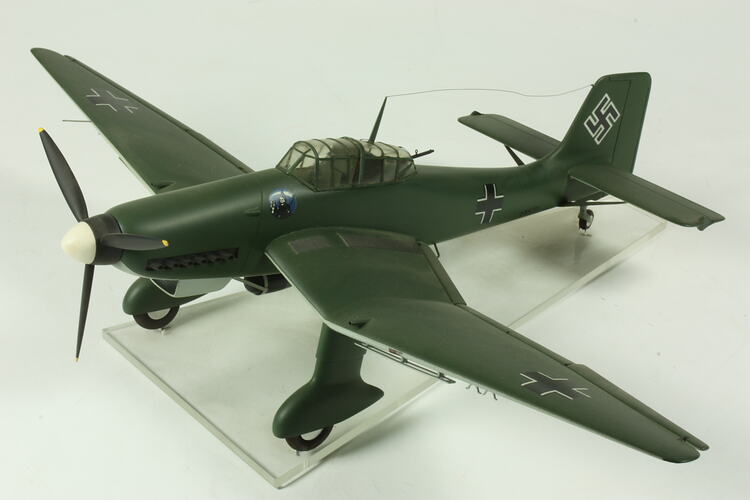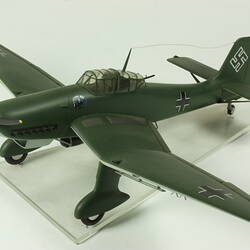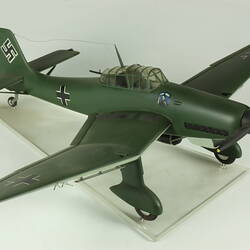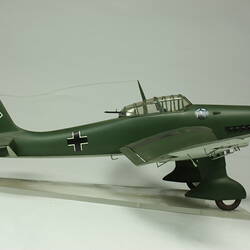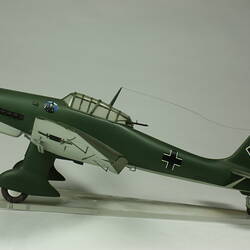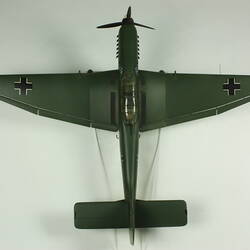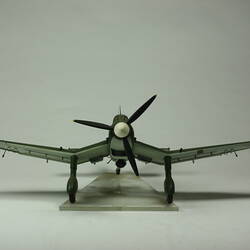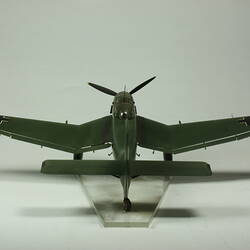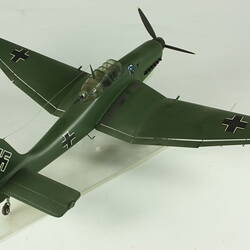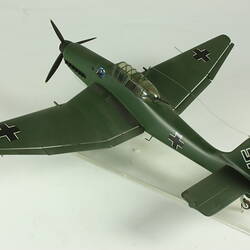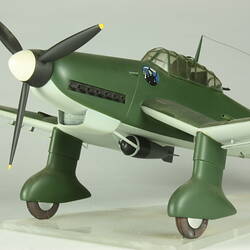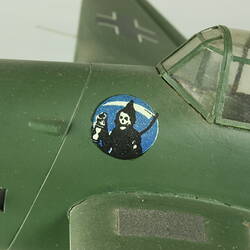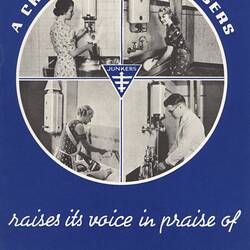Summary
Aircraft History
The menacing image of the Ju-87 Stuka dive-bomber remains to this day thanks to German newsreel images which feature regularly in documentaries. The Junkers firm based at Dessau, Germany had pioneered the construction of all-metal aircraft including the F13 and the reliable Ju-52 series. In 1935, the first Stuka (short for Sturzkampfflugzeug or dive attack aircraft) flew with a Rolls-Royce Kestrel engine. The newly formed Luftwaffe was being equipped with aircraft that would best fit its role as an army close-support arm. The Ju-87 was strongly supported by Ernst Udet as head of development for the Luftwaffe's technical department.
Like several other German aircraft types, the Ju-87A was sent to Spain to serve with the Condor Legion. Improvements were made and the Ju-87B became the standard service model by 1939, powered by a Junkers Jumo engine. The Ju-87 had a leading role in the attacks on Poland, France, Belgium and Holland in 1939-40 where it bombed from an almost vertical dive, sometimes accompanied by a wind-driven siren. Its limitations were exposed during the Battle of Britain in 1940 as it proved vulnerable to fighter attack.
Australian troops serving in the Western Desert, Greece and Crete were regularly attacked by Ju-87 aircraft which were operated extensively by the Luftwaffe and the Italian air force in the Mediterranean area. Italian Ju-87's sank the Australian destroyer HMAS Waterhen near Tobruk in June 1941. The upgraded Ju-87D model served extensively in Russia although it had largely been replaced by 1944. The defeat of Nazi Germany in May 1945 saw the scrapping of almost all surviving Ju-87's with only a couple held in museums. In recent years, some parts have been salvaged from wreck sites.
Model History
This 1:32 scale model of a Ju-87D was commissioned by the Museum and made by Mr R.D Ramsay in 1953. It is painted in dark green with light blue underside. The Luftwaffe markings are not accurate in style or scale for the later Ju-87D.
More Information
-
Collecting Areas
-
Acquisition Information
Purchase
-
Modelmaker
Mr R. D. Ramsay, Melbourne, Greater Melbourne, Victoria, Australia, 1953
-
Classification
Air transport, Aircraft, Model propeller aircraft - military
-
Category
-
Discipline
-
Type of item
-
Overall Dimensions
432 mm (Width), 328 mm (Depth), 145 mm (Height)
Measurements of model only. 'Width' is model wingspan, 'Depth' is model length from nose to tail, 'Height' is overall model height while resting on its undercarriage.
-
Other Dimensions
432 mm (Width), 336 mm (Depth), 148 mm (Height)
Overall measurements of model including its base. 'Width' is model wingspan, 'Depth' is model length from model nose to tail end of base, 'Height' is overall model height including base.
-
Model Scale
1:32
-
Keywords
Aeroplanes, Bombers, Military Aircraft, Model Aeroplanes, Scale Models, Wars & Conflicts
